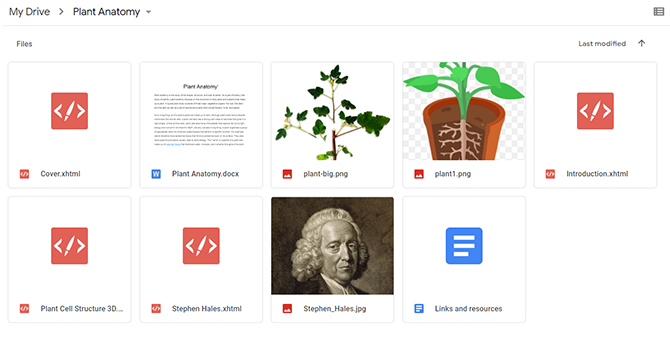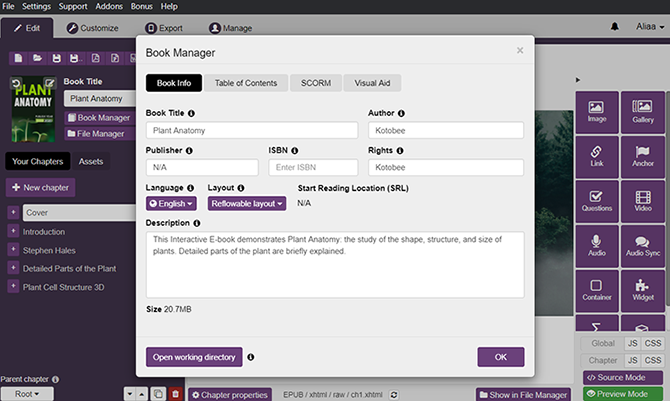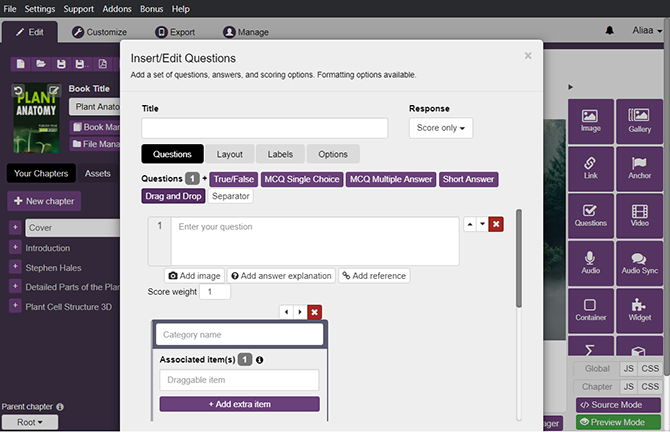How to Create an Interactive Textbook for Your Students
If your students are zoning out in class, they might not find your teaching methods stimulating enough. Unfortunately, it’s not simply a case of slacking off. Research shows that our average attention span has dropped to 47 seconds of focused screen time. This means that your students need catchy, attention-grabbing ways to stay focused while learning.
Thankfully, you don’t have to completely change your teaching methods to keep students focused. In fact, you can simply turn your course material into an exciting interactive textbook! Using them will transform passive reading into active learning, enabling students to explore concepts in a way that suits their individual needs. By doing so, you’ll enhance students’ learning and make your classes more fun at the same time.
But you might be wondering how you can create such impactful resources without needing a team of developers? In this article, we’ll explore the tools, techniques, and strategies that make creating interactive textbooks not only possible but also simple and approachable for anyone, even without advanced technical skills.

What Is an Interactive Textbook?
An interactive textbook is a digital version of a textbook that contains interactive elements. These textbooks take advantage of the major shift to digital learning in recent times by offering lots of features that enhance students’ learning.
Switching to digital interactive textbooks can be a good investment as they’re more engaging than regular ones. With an interactive textbook, you can add features such as quizzes, 3D models, videos, and more. These elements can make the learning process much more productive and exciting for students.
Which Formats Allow for Interactivity?
While there are many ebook formats available for different e-readers, it’s important to remember that not all of them support interactive features. Most ebooks are static or fixed, which means they are not compatible with interactive elements.
Below are the formats that support interactivity:
- EPUB3: EPUB3 is one of the most popular ebook formats worldwide. This is the most accessible format that allows you to add interactive elements to an ebook. Nowadays, EPUB3 files work on almost all ebook readers across different devices.
- Encrypted EPUB: This file format is a more secure version of regular EPUB3 that allows you to prevent unauthorized readers from accessing your ebook. By exporting your book using Kotobee Author, you can encrypt your EPUB file to protect it from plagiarism and piracy.
- Ebook apps: Ebook apps are a combination of an ebook and an application merged together in one package. To create one, just export your ebook as a desktop, web, or mobile app in Kotobee Author’s “Export” tab.
Meanwhile, here are the formats that don’t support interactivity:
- PDF: The PDF format has been predominantly known as a static format, meaning that it can’t be interactive. With PDFs, you are limited to images and links in most cases. This also means that PDFs may not display properly on all e-readers and can be rather large in size.
- EPUB2: EPUB2 is an older and simpler version of EPUB that doesn’t support interactive elements. This means it offers limited text and image formatting options. While some publishers still host EPUB2 files in their libraries, this format is slowly becoming obsolete.
Which Elements Can You Use in an Interactive Textbook?
Creating interactive ebooks opens up a world of possibilities for engaging your readers. With various book widgets and multimedia content at your disposal, it’s important to know your options. To help you get started, we’ve outlined the most common elements of an interactive textbook.
Videos
Educational videos can be a great addition to your textbook. Instead of thoroughly explaining a concept in text and diagrams, you can add a video that details the entire process. This way, students can see the concept being applied in real-time, which can enhance their understanding of it.
Unfortunately, adding even just a few videos can bloat up your textbook. So, it’s important that you find ways to reduce the size of your ebook file. To do this, you can either optimize the videos you add or embed links to videos hosted on platforms like YouTube. Embedding links allow users to stream the videos directly from the hosting platform, however, their drawback is that they require an internet connection.
Audio
Videos can sometimes be too distracting for students, and long passages of text can be boring or understimulating. To address both issues, consider using audio clips, which can engage students without breaking their focus. Audio clips are also crucial for students with visual impairments or learning disabilities that affect their ability to fully understand long paragraphs of text.
For example, if you were creating a language textbook, you could add audio pronunciations of new vocabulary words. Or, if you were creating reading books for first graders, you could include audio recordings of the stories to help students who might be struggling to read some of the words.Just like with videos, you can optimize your audio clips to reduce their size or you can simply embed them in the textbook.
Questions
In order for your textbook to be an effective learning tool, your students must understand the material in it. And the best way to check their comprehension is, of course, by giving them questions to answer! There are all sorts of question types you can add to your textbook, such as drag and drop, true or false, or multiple-choice questions.

These questions can be added as a form of self-assessment for students. After they answer the questions, they can immediately find out what they got right or wrong. You can even link back to the chapters they seem to be having difficulties with.
Once they’re done, you’ll immediately get their test scores. Then you’ll be able to pinpoint which topics students are excelling at or having a hard time with. This can help you adjust the course material or the method you use to explain the concepts.
Interactive Images and Popups
While images in ebooks are usually static, you can easily turn them into interactive elements. For example, say you have an illustration of a plant. Instead of adding labels to each part of the plant, you can insert a pop-up button on the page. That way, your students can view the image with ease and click on whatever part they’d like to learn more about. You can even add explanations that will appear once they hover over (or click on) a part of the image.

Alternatively, you can add a trigger to your image so that an action happens once your students click on it. Maybe it will change color once they hover over it, or it can play a video or audio file when clicked on. There is so much you can do with interactive images, so feel free to experiment and find new ways to use them.
Animations
Animations don’t only serve as decorative elements on the page. They can also be used as a learning tool to explain complex concepts. Not only that, but you can also use GIFs animations as a lightweight alternative to videos, helping you reduce the file size of your ebook without compromising on engagement. If you’re interested in creating your own animations, check out these 4 simple animation techniques for ebooks.

Book Widgets
If you’re looking to transform the learning experience for your students, try adding book widgets to your textbook. These widgets allow you to add all sorts of interactive elements, apps, or even games to an ebook. For instance, you can add interactive graphs, calculators, and charts in the form of customizable book widgets. Or, you can use games such as crosswords or word searches as brain teasers for your students. The possibilities are endless.

3D Models
Compared to regular interactive images, 3D models make for an immersive learning experience for students. To shed more light on this, let’s say you’re teaching a biology class, and you’re covering the components of a plant cell. Why not add a 3D plant cell model for your students to explore? This way, they can examine the chloroplasts and mitochondria of the cell without having to use a microscope.
Once you start using 3D models in your textbook, you will probably never go back. As for where to find them, you can check out websites such as Sketchfab for high-quality models.

How to Create an Interactive Textbook
You’re now familiar with the formats that allow for interactivity and the type of interactive elements we can add. It’s time to learn how to create an interactive textbook. The best way is by using an interactive textbook creation software. For today, we’re using Kotobee as an example.
1. Gather Your Content
Before you start, you’ll need to collect all the necessary content for your textbook before you begin, including text, visual aids, and tests/questions. Having all the materials ready before you start on your ebook can help make the process go smoothly.

2. Download Kotobee Author
The next thing to do is to head on to Kotobee.com and sign up for a free license. Simply add your email in the blank space and click on “Get your free license.”
You’ll get a verification email sent to your inbox. Once you follow the steps in the email, you’ll have activated your free license.
Now you simply need to choose the right file type for your operating system, it’s available for Windows, iOS, and Ubuntu.
3. Choose Your Layout
The next step is to open Kotobee Author. You’ll get a popup welcoming you and asking you for your preferred layout. There are two layouts to choose from: fixed and reflowable. Since we’re working on an interactive textbook, we’re going to choose a reflowable layout that students can read on any device. You can also choose one of Kotobee Author’s many textbook templates from here.

4. Add Your Content
This is the stage where you add all of your content into the ebook and divide it into chapters. If you have the material ready in a Word or PDF document, then you can just import it and adjust the formatting.
After that, click on Book Manager on the upper left side of the Edit tab. Fill in the information needed.
5. Add Interactive Elements
We’ve now reached the fun stage where you’ll be enhancing your textbook with interactive elements. You’ll find them available on the right-side panel in Kotobee Author.
In this book, for example, we’ve chosen to use Images (with interactive pop-ups), Videos, and 3D models.
6. Export Your Ebook
Now that your textbook is ready, all that’s left is to export it in the format you need. The best thing about Kotobee is its wide selection of export formats. Just click on the Export tab and choose the one that best suits your needs, whether an Epub or a SCORM file to integrate it with your school’s LMS. Once you select the desired export option, click Create to generate your ebook.

If you prefer, you can skip downloading a file and host the textbook online instead. This option makes it easy to share a direct link with your students, allowing them to access the textbook from any device with an internet connection. To ensure that your textbook is optimized for its file format, check out the Kotobee support pages so you can find the requirements for each export option.
And that’s it, as soon as your textbook is exported, you can now share it with your students!
To view the final results of our example textbook, click the link below.
View The ‘Plant Anatomy’ Textbook!
Or, you can check out other samples below:
- Photography Basics
- Design Styles
- 8 Stunning Ancient Egyptian Monuments
- Health and Fitness
- Holistic Aromatherapy
- Coronavirus
- Ebook Sales Statistics
Final Thoughts
The education sector is changing, and so are the new students coming in every year. So, it’s a good idea to adapt your teaching methods as new waves of elearning technology appear. And what better way to do that than by transforming their textbooks into interactive, hands-on activities that challenge their skills? Your students will thank you for it.
We hope you found this guide helpful! If you did, share your thoughts with us in the comments below.
.
Read More
5 Hacks for Creating a More Engaging Ebook
4 Tips to Improve Your Ebook with Interactive Visuals
How to Create an Interactive Ebook: A Step-by-Step Guide



















Peter Cockcroft
May 6, 2020is there a comparison with Designrr?
Kotobee
June 24, 2020Sadly, so far there isn’t a comparison. We will keep it in mind for the future.
Mrs. P McPhee-Hield
August 11, 2020I loved reading this! I am definitely looking into this.
Kotobee
August 18, 2020We are so glad you enjoyed it!
Joel Gilbert
November 9, 2022This looks great. I am creating a training manual, is it possible to print a physical copy of the ebook i design? Obviously, it wouldnt have the interactive features.
Second question, who owns the rights to the ebook i create and can I move it to another platform, later. Thank you
Kotobee
April 5, 2023Regarding your first question, yes, it is possible to print a physical copy of the ebook you design. However, as you noted, the interactive features will not be present in the physical copy. Using Kotobee Author, you can easily export your ebook as a PDF and print it out.
As for your second question, you own the rights to the ebook you create using Kotobee. You can publish it on any other platform.
If you have any further questions or concerns, please feel free to reach out to our support team.